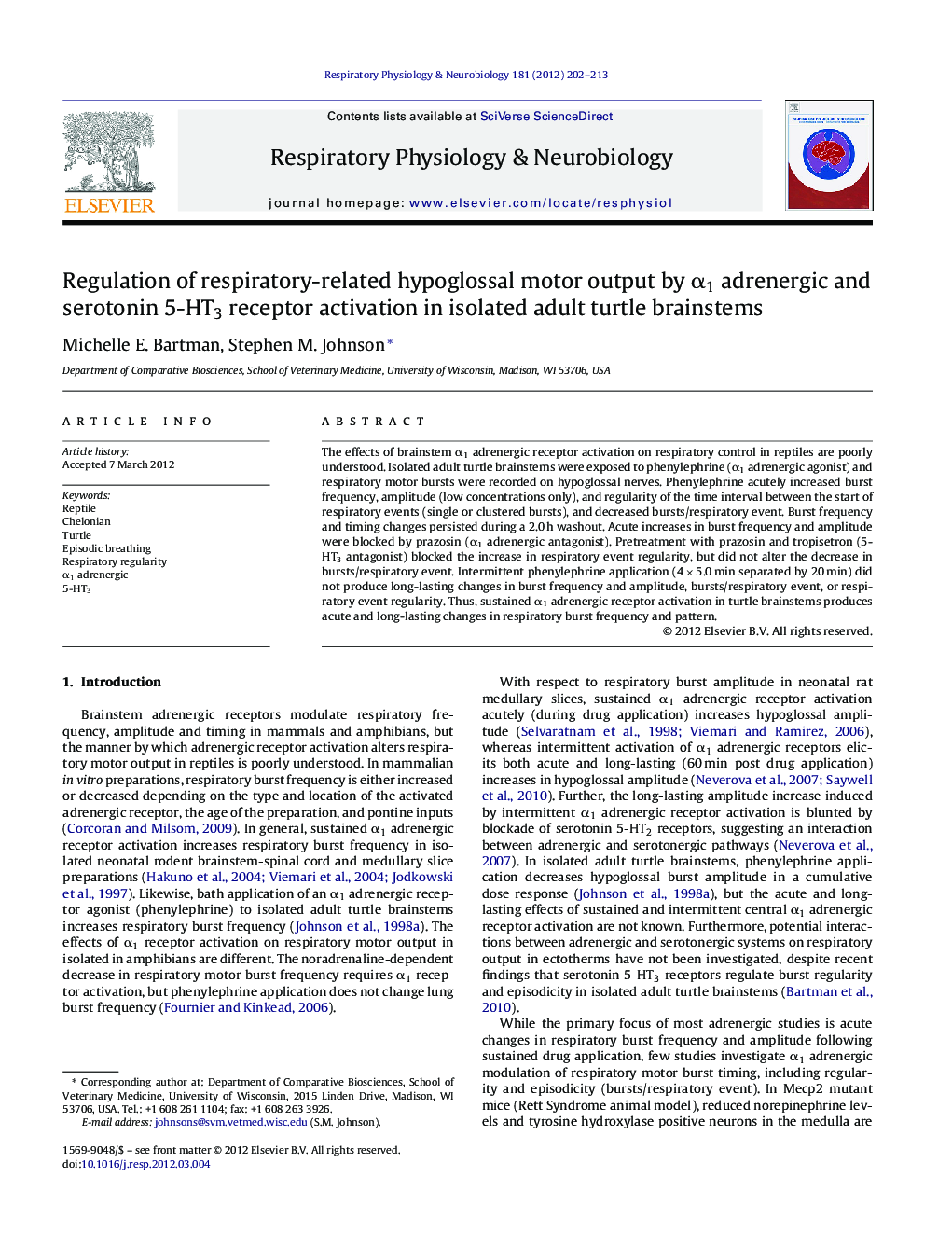| Article ID | Journal | Published Year | Pages | File Type |
|---|---|---|---|---|
| 5926232 | Respiratory Physiology & Neurobiology | 2012 | 12 Pages |
The effects of brainstem α1 adrenergic receptor activation on respiratory control in reptiles are poorly understood. Isolated adult turtle brainstems were exposed to phenylephrine (α1 adrenergic agonist) and respiratory motor bursts were recorded on hypoglossal nerves. Phenylephrine acutely increased burst frequency, amplitude (low concentrations only), and regularity of the time interval between the start of respiratory events (single or clustered bursts), and decreased bursts/respiratory event. Burst frequency and timing changes persisted during a 2.0 h washout. Acute increases in burst frequency and amplitude were blocked by prazosin (α1 adrenergic antagonist). Pretreatment with prazosin and tropisetron (5-HT3 antagonist) blocked the increase in respiratory event regularity, but did not alter the decrease in bursts/respiratory event. Intermittent phenylephrine application (4 Ã 5.0 min separated by 20 min) did not produce long-lasting changes in burst frequency and amplitude, bursts/respiratory event, or respiratory event regularity. Thus, sustained α1 adrenergic receptor activation in turtle brainstems produces acute and long-lasting changes in respiratory burst frequency and pattern.
⺠α1 adrenergic receptor activation altered respiratory pattern in turtle brainstems. ⺠The increase in burst frequency and amplitude required α1 adrenergic receptors. ⺠The increase in burst regularity required α1 adrenergic and 5-HT3 receptors. ⺠The decrease in bursts/episode persisted during α1 adrenergic and 5-HT3 blockade. ⺠Intermittent α1 adrenergic receptor activation did not induce neuroplasticity.
